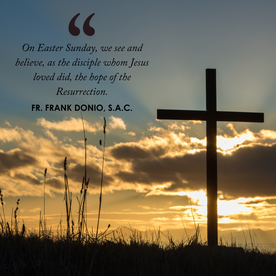 The time of the Paschal Triduum and the Easter season are almost upon us. How has the time of Lent been? It is meant to be one of ongoing conversion to Christ – metanoia. The Triduum offers us a deeper time of conversion. The Gospel readings of those days give us much to reflect on our own discipleship of Christ. On Holy Thursday, during the Mass of the Lord’s Supper, we experience table fellowship, the first Eucharist, and the witness of Christ in service to his Apostles through the washing of the feet. It is an example that we are called to follow. During the Commemoration of the Passion of Our Lord Jesus Christ, we hear of the betrayal of Judas, the denial by Peter, the suffering of Jesus, and the grief of those at the foot of the Cross, especially the Blessed Virgin Mary. In what occurs, we consider the ways in which we have not lived for Christ and how we can unite our suffering to his on the Cross. At the Easter Vigil, in the announcement of the angel to Mary Magdalene and the women at the tomb, we learn about the possibility of eternal life given to us all through the Risen Christ. On Easter Sunday, we see and believe, as the disciple whom Jesus loved did, the hope of the Resurrection. In this hope, we proclaim the Risen Christ as Savior of the world! Metanoia, ongoing conversion, is a patient journey that leads to our true joy, deeper encounter with the Risen Christ! May the charity of Christ urge us on! May you have a blessed Paschal Triduum and a joyous Easter! In God, the Infinite Love, Fr. Frank
0 Comments
From the evening Mass of the Lord’s Supper until Evening Prayer on Easter Sunday, the Church celebrates a very special period called the Paschal Triduum. As the USCCB explains, the Easter Triduum is the summit of the Liturgical Year which “marks the end of the Lenten season.” Because of this important spiritual shift, there are some symbols used during this liturgical season that are unique to the Paschal Triduum, and I hope that you might find and reflect on these symbols this year as we commemorate the life, death, and Resurrection of Christ.
Holy Thursday Holy Oils The Holy Oils that are used by the Church throughout the year (Oil of the Sick, Oil of the Catechumens, and Holy chrism) may be presented during the entrance procession of the Mass of the Lord’s Supper on Holy Thursday. These oils are blessed by the Bishop during the Chrism Mass—which can happen on Holy Thursday or another time during Holy Week—with the priests of the diocese gathered at the local cathedral. During this celebration, all of the priests present renew their priestly vows. Ringing of the Bells During the “Gloria” which is sung on Holy Thursday, we hear the altar bells ringing! We are celebrating the Mass for the last time until the Easter Vigil, and the Church is in mourning so the bells will remain silent until we sing the “Gloria” again. Washing of the Feet As Jesus did at the Last Supper (John 14:1-17), the Church is called to wash the feet of the members of the Body of Christ during the celebration of the Institution of the Eucharist. This symbol of humility is a wonderful connection with the service of Christ. Ubi Caritas It is rare that the Church prescribes a specific hymn to be sung other than those prescribed for the Proper of the Mass, yet on Holy Thursday the Roman Missal says that we should sing the ancient song “Ubi Caritas” during the Offertory. A very simple song, the lyrics are very meaningful, especially for the Mass of the Lord’s Supper. Translated, they mean "Where charity is, God is there." Eucharistic Procession and Reposition The Church’s tabernacle, while normally filled with the Blessed Sacrament and reserved hosts, is emptied and brought to the Altar of Repose where the faithful are invited to join in Adoration. This procession is meant to be of great importance for the community and reminds us of the walk that Christ is about to take the following day on the Via Dolorosa, but instead of being nailed to a cross, we place our King in a place of honor. Good Friday Fonts After the Mass of the Lord’s Supper on Holy Thursday, churches are supposed to empty their Holy Water fonts “in preparation of the blessing of the water at the Easter Vigil, and it corresponds to those days on which the Eucharist is not celebrated (i.e., Good Friday and Holy Saturday).” (EWTN) Prostration On Good Friday, the Church is mourning the death of Christ and is full of sorrow. In response to this sorrow, the priest (and deacon, if present) prostates himself in front of a stark, barren altar. There is no music and none of the regular pomp and circumstance that comes with the beginning of a liturgical celebration. No sacraments are to be celebrated but that of penance and the anointing of the sick. The earth has gone quiet. No Invitation Normally, when a priest begins Mass, he invites us all to pray along with him, saying, “Let us pray.” During the Celebration of the Lord’s Passion (Good Friday), no such invitation is made. The priest just begins his invocation. Solemn Intercessions You may find that the prayers of the faithful may take longer than normal. Your church may sing them or have them chanted, with some kneeling and standing interspersed. Adoration of the Holy Cross There are many ways in which the Celebration of the Lord’s Passion is different from other liturgical celebrations, and the adoration of the Cross is certainly one of them. We are invited to come forward and spend time in veneration and adoration of the Cross on this most solemn of days – the day on which Christ perished while hanging from the very cross which we venerate. You may notice people genuflecting to the cross – this is something reserved specifically for Good Friday, out of veneration and sorrow for the blood which was shed and soaked up by the wood of the cross. Communion The Celebration of the Lord’s Supper is not a Mass. It is the one day out of the year in which no Mass is celebrated anywhere on Earth. Therefore, when we come to the celebration, there is no Eucharistic Prayer or any prayer related until, after the Adoration of the Holy Cross, the priest or deacon brings out the Blessed Sacrament and begins praying the Agnus Dei as it is normally done at Mass, which follows with himself and others receiving the Blessed Sacrament. Holy Saturday and the Easter Vigil Decoration When one walks into the church for the Easter Vigil, they will notice a big change from the celebrations of Lent and Holy Week – the church should be decorated with lilies, white and gold, and a joyful décor! While the lights should be turned down as well, we are anticipating the Resurrection and the excitement is palpable! The Light of Christ From the fire used to light the Easter Candle, the inscriptions on the Easter Candle, and the procession into the Church, light is integral to the Easter Vigil due to its representation of the "light of Christ, rising in glory," scattering the "darkness of our hearts and minds." We process into the Church with the Easter Candle, “just as the children of Israel were guided at night by the pillar of fire, so Christians follow the risen Christ” as we proclaim The Light of Christ while singing praises of thanksgiving! (USCCB) Readings Instead of the standard 3 readings at a Sunday Mass, at the Easter Vigil we generally hear anywhere between 5 and 9 readings. As we prepare to celebrate some of the holiest days in our Church, I invite you to observe the different rituals, customs, and symbols present during the Triduum. May you have a blessed and joyous Easter season! Question for Reflection: What changes do you notice from the Lent to Easter season? For more resources to guide you throughout the Triduum into the Easter season, please click here. “Rejoice! Hidden within your life is a seed of resurrection, an offer of life ready to be awakened.” -Pope Francis What does Easter look like for you? Does it mean plates filled with sweets, a backyard sprinkled with hidden eggs, a large family gathering, wearing your Sunday best, a long evening at the Easter Vigil? The first Easter Sunday was comprised of an empty tomb, faces that went from fear and despair to bewilderment and excitement, and hands and feet that were pierced but glorified. But for all Christians, Easter Sunday is a day of transformation: darkness to light, despair to hope, death to resurrection. We have journeyed with Christ for 40 days in prayer, fasting, and almsgiving in order to reach this point of transformation. We have been made ready, through God’s grace, to join Him in the celebration of His victory over sin and death. And so Pope Francis reminds us to “Rejoice!,” for the resurrected life of Christ is offered to each and every one of us. Will you allow it to be awakened? The Paschal Mystery is so great that the Church will continue to celebrate this central event for the next 50 days until the Feast of Pentecost, on May 20th. I love the significance of the length of time. Though we have fasted with Jesus in the desert for 40 days, we celebrate as a Church for longer—symbolizing the ultimate victory of our efforts when united with Christ. Though we are called to have periods of intense fasting and prayer in our spiritual life, the end goal is the Resurrection. Let us not fail to celebrate the Easter season and let us celebrate it well! We do this by allowing the life of Christ to live within us long after the Lenten season. Pope Francis said, “The heartbeat of the Risen Lord is granted us as a gift, a present, a new horizon. The beating heart of the Risen Lord is given to us, and we are asked to give it in turn as a transforming force, as the leaven of a new humanity.” Will our hearts beat in time with Christ’s? Will we become the leaven of a new humanity? And if so, what does this even look like? The Gospels give us a few clues. On the night before Christ gave Himself over to be crucified, we read about an intimate encounter between Him and John who has come to be known through tradition as the “Beloved Disciple.” At the Last Supper, after Jesus has washed the disciples’ feet, we read in John 13:23 that “One of his disciples, the one whom Jesus loved, was reclining at Jesus’ side.” During this time of heightened anticipation, it’s an easy detail to miss. John was literally resting on the heart of Christ. He was also present at the crucifixion, the one who did not abandon his Master in this time of fear and confusion. Spending time with Christ in prayer, resting on His heart, allows our hearts to beat in time with His and helps us become “leaven of a new humanity.” The holy women who followed Jesus also understood this. They were present at Christ’s crucifixion and were the first disciples to whom Jesus appeared on the day of His Resurrection. May we look to the example of John and the holy women as we embark on this Easter season. Let us go frequently to meet the Lord and rest with Him by spending time in reflective prayer, reading Scripture, receiving the sacraments, and “washing the feet” of our brothers and sisters. These actions allow our hearts to sync with His. Let us go quickly to the tomb—as the holy women did— only to find it empty, so that we can return with the joyous news of the Resurrection and proclaim it to all who will listen. Pope Francis encourages us, “Let us go, then. Let us allow ourselves to be surprised by this new dawn and by the newness that Christ alone can give. May we allow his tenderness and his love to guide our steps. May we allow the beating of his heart to quicken our faintness of heart.” Questions for Reflection: How has your spiritual life transformed throughout Lent? How can you faithfully celebrate this Easter season? Click here for more resources to guide you through this Easter season. A little more than 100 miles south of Berlin, Germany, just north of the Ore Mountain Range, lies the small town of Lomnitz. In the early 20th century when millions of Europeans journeyed to the United States in search of a better life, a small group of immigrants from Lomnitz was processed through Ellis Island. To those immigrants, the United States federal government assigned the last name “Lomnitzer.” Just as those from New York are called New Yorkers, so too were those from Lomnitz to be called Lomnitzers. Although I am not German by blood, there is a special place in my heart for the small town of Lomnitz and the group of Lomnitzers that settled in America. When my paternal grandfather was born, he was left by his biological mother at the doorstep of a convent. The loving nuns found a home for the baby and he was adopted as an infant. He then became Charles Lomnitzer, a beloved member of the Lomnitzer family. It is through the generosity of the Lomnitzers that I, Tyler Lomnitzer, three generations removed, have a wonderful life and continue to bear the family name with honor and gratitude. The Lomnitzers recognized the dignity of each and every human person. Charles’s biological mother was unable to care for him, but the Lomnitzers nevertheless saw Charles as a gift and blessing to their family. Just as America provided a beacon of hope and the promise of a better life to the Lomnitzers, so too did the Lomnitzers provide a beacon of hope to my grandfather. I found the story of my family to be a powerful moment of prayer last Thursday, January 18 during the annual Vigil Mass for Life. The Mass takes place at the Basilica of the National Shrine of the Immaculate Conception in Washington, D.C. the night before the annual March for Life. Packed into the basilica were thousands of Catholics from all over the country who had gathered to pray for the legal protection of the unborn and for an increase in the recognition of the sanctity of life from conception until natural death. We gathered under the leadership of the bishops—Cardinal Dolan from the Archdiocese of New York was the celebrant and homilist—to come together as a Church in fellowship and prayer. It was the nuns’ prayer and commitment to life that found a home for my grandfather and paved the way for my life in this world; it will be the prayer and commitment to life of all those present at the basilica that will lead to (God-willing) thousands of beautiful lives to come. It was also the prayer and commitment to life of the Lomnitzers that allowed them to find room in their home for a little boy who needed parents. The Lomnitzer lineage is my lineage, not by blood, but by love. Please join me in prayer for all those who need parents, or lack other necessary means of survival. Question for Reflection: What are some ways that you can touch the life of someone you encounter so that the other might recognize their own life’s gift and sanctity? When they had gone ashore, they saw a charcoal fire there, with fish on it, and bread. Jesus said to them, ‘Bring some of the fish that you have just caught . . . Come and have breakfast.’ –John 21: 9-10 Easter is a season of renewal, wonder, and awe. The light of Christ conquers darkness, and new life overcomes sin and death. Hope lives, as Fr. Frank wrote, and “We are called to see with the eyes of faith in Christ.” Excitement wells up in me around this time every year when the world is waking up – new blooms appear on trees and in gardens while the sunlight lasts longer each day. Even more exciting than this change in nature is the joy that comes from the Easter Vigil, when the Church welcomes new members and we renew our baptismal promises. As the earth awakens each spring, this liturgical season also invites us to wake up to Christ’s triumphant love. The Gospel readings following Easter Sunday and the Easter Octave are cherished stories and intimate encounters with Jesus. He appears to his disciples when their eyes are still bleary from what happened on the Cross. He has indeed risen as he said. They are called to see and to not be afraid, to touch his wounds, and to ask him questions. One such story occurs before Jesus asks Peter if he loves him. Jesus first directs the disciples to an overwhelming catch on the Sea of Tiberius after a long night of unsuccessful fishing. Their nets overflow. They do not recognize him at first until this moment. Then, John tells Peter and the others, “It is the Lord.” Peter impetuously jumps out to join Jesus while the others row ashore. Sitting at the charcoal fire with fish and bread, Jesus invites the fishermen to come and eat breakfast. I imagine this moment filled with wonder and awe. The disciples will now be “fishers of men,” following Christ’s example and listening to his voice. In the forty days after his Resurrection, Jesus prepares his disciples for their new life of faith and evangelization. Like a dear friend, he gives them advice, teaches them, and even cooks for them. The meal on the beach must have tasted wonderful! This scene is a gift to the senses, like the coming of springtime and the exuberance of the Easter Vigil. What would it be like to be one of the disciples on that beach at daybreak? The cool breeze and the smell of fire caught up in the air, the morning colors dancing in the sky from the sunrise, the feeling of contentment the disciples must have had after catching so many fish, their weariness from a long night, and the sound of Jesus’ voice giving gentle direction. What would it be like to recall all the times you sat with him, to remember the day of his death, and then be present with him and eat fish and bread? This moment on the beach is an intimate encounter that we are also called to experience after the events of Holy Week and throughout all of our lives. During this fifty-day season, I invite you to listen, to sit, talk, and eat with Jesus on the seashore. Reflection Question: What signs of Easter have you noticed springing up in your life since Holy Week? How will you share and enjoy them with Jesus? “Rejoice! Hidden within your life is a seed of resurrection, an offer of life ready to be awakened.” -Pope Francis The world in which we live is filled with distraction and noise. I realized this in a deeper way as a new mom nursing my newborn at all hours. During those late night feedings, I needed something to keep myself awake and found myself gravitating towards my phone more and more. It was easy to hold and look at in the dark, and I found it nearly impossible to concentrate on reading a book, let alone holding it open as my newborn moved about. By the time Lent rolled around, I had been watching online TV episodes, checking my various social media feeds consistently, or scrolling through house listing websites. In our culture, this type of electronic consumption is easy to fall into. And while these sites or activities are not necessarily wrong or evil, I felt that I was more and more consumed by things of this world. In prayer, I felt the Lord asking me to be consumed with Him rather than by materialism, technology, or my own desires. What we consume defines who we are and what we become. What started out as a way to keep myself awake in those exhausting first weeks and months of motherhood had become a small addiction. What if instead, I used those minutes and hours to pray, to be still with my thoughts, to be present to my son? I had a quiet Lent. Formally, I gave up “scrolling.” I did not look at social media feeds, online shopping websites, or TV shows. I also limited my consumption of music and movies. I felt that I had truly entered a desert and made an ongoing “silent retreat” without completely removing myself from the world. I was becoming a “contemplative in action” and realized that even as a parent and married person, I could still carve out time for Christ each day through silent reflection. Instead of consuming media, I prayed and I was silent. I used my phone only for Scripture reading or Catholic reflections. I prayed the Rosary and the Divine Mercy Chaplet. I read spiritual books. I thought of all the friends and family that had asked for my prayers. I offered up this media fast for them and for the needs of the world. This was hard. I noticed how many times my hand gravitated towards the screen. I noticed how much time I had spent behind one. Now that I have emerged from the season of Lent, I can’t help but wonder how I’ve changed. In his homily at the Easter Vigil this year, Pope Francis spoke of the changed faces of Mary Magdalene and the other Mary after they visited Christ’s tomb. The two brave women ventured out in the early hours of the morning “pale and tearful” and “walked like people going to a cemetery.” They had not yet encountered the Risen Lord. When they arrived, they were met with miraculous, life-changing news: “He has been raised just as he said!” The women leave rejoicing and run immediately to tell the disciples, to evangelize. Their faces are completely transformed. This leads me to reflect, “How has my face transformed this Easter season? Have I emerged from the tomb of Lent rejoicing?” Lent and Easter are about transformation—going from the tomb to new life. Christ is raised from the dead and extends this life to us all. He has opened the doors to our salvation. We don’t have to wait for death to experience this new life. By being consumed by Christ Himself, through prayer and most powerfully through the reception of the Eucharist, we are enabled to become Christ-bearers and share the joy of new life with all we encounter. Pope Francis invites us to experience and live this transformation in our everyday lives, saying: The heartbeat of the Risen Lord is granted us as a gift, a present, a new horizon. The beating heart of the Risen Lord is given to us, and we are asked to give it in turn as a transforming force, as the leaven of a new humanity. In the resurrection, Christ rolled back the stone of the tomb, but he wants also to break down all the walls that keep us locked in our sterile pessimism, in our carefully constructed ivory towers that isolate us from life, in our compulsive need for security and in boundless ambition that can make us compromise the dignity of others. After 40 days of penance and sacrifice, it’s tempting to go back to our old ways—to “carefully constructed ivory towers” and a “compulsive need for security.” “We can grow accustomed to living with the tomb,” Pope Francis cautions. This Easter season, we must decide to leave the tomb: to stay present, to pray, to choose to be consumed by God. I have learned that in so doing my life is made richer and more meaningful. When consumed by God, I am better able to be present to and love others. As we continue our victorious journey through the Easter season, I invite you to consider how your life has changed as a result of your Lenten journey. Have you emerged from the tomb? How has your face changed? For more resources on Lent and Easter, please click here. Exult greatly, O daughter Zion! Shout for joy, O daughter Jerusalem! Behold: your king is coming to you, a just savior is he, Humble, and riding on a donkey, on a colt, the foal of a donkey. Zechariah 9:9 So begins the first liturgy of Holy Week on Palm Sunday. We hear these words referenced in the first of an unusual two Gospel readings during the procession into the church. We start our celebration of Palm Sunday, appropriately, by proclaiming and then reenacting the story in Matthew’s Gospel of Jesus’ entry into Jerusalem, a moment of great joy and excitement for the inhabitants of the city. Those in the congregation welcome the priest, who enters the church in persona Christi, as we echo the words of the people of Jerusalem, “Hosanna in the highest!” What a happy occasion! The Messiah, the One whom the prophets foretold, has come! How fickle this joy seems, though, when we get to the Passion narrative. In a matter of minutes, we go from crying, “Hosanna!” to “Crucify him!” One minute, we’re giving Jesus a king’s welcome. The next, we’re condemning Him to death. I know I’m not the only one who feels a dagger through his heart every time we say—loudly—that refrain of condemnation. How dare I welcome Christ with such exuberance, knowing what I’m about to do to Him? Quite the emotional roller coaster, with Mass only halfway over! Holy Week is exhausting. I find it the most taxing part of the liturgical year. Starting with Palm Sunday, I’m attending Masses, praying the Stations of the Cross, and singing with the choir for days on end, practically turning the Triduum into a 3-day long vigil. In recent years, I’ve taken to spending Good Friday on pilgrimage to the National Shrine in Washington, D.C., to place myself in an intentional state of prayer and reflection. So why do I do this to myself? Why get on this roller coaster and make myself so physically, emotionally, and spiritually drained by the time Easter morning arrives? Quite simply, it’s because I love it. It’s the most rewarding experience of prayer that I have all year. On Palm Sunday, we’re reminded of what we’ll bear witness to in the days to come. We’re invited to reflect on what’s about to be re-presented in a real-time reenactment of the focal point of Christ’s entire earthly life. At the Chrism Mass on the morning of Holy Thursday, we bear witness to the consecration of holy oils for use in the upcoming year’s sacraments. We also see the gathering of all our diocesan priests, who renew their vows and participate in probably the largest concelebration of the year. It’s a moving and impressive sight. Later on Holy Thursday, we see the reenactment of the Last Supper, the very institution of the Eucharist we celebrate to this day. We’re reminded, too, of the great humility we’re called to emulate: “If I, therefore, the master and teacher, have washed your feet, you ought to wash one another’s feet.” (John 13:14) On Good Friday, we once again take up the cries of, “Crucify him!” as we see the events of Christ’s Passion and death unfold before our eyes. We’re called toward the sanctuary to kiss the gruesome device of our salvation, the ancient instrument of punishment used to redeem all of mankind. And after an unceremonious Communion service, the liturgy suddenly pauses and we just go home. The Church holds its breath as we wait. And then, finally, the Easter Vigil—the happiest day of the year, of all history! We hear the no longer fickle, but truly joyous words of the Exsultet, the Easter Proclamation: Exult, let them exult, the hosts of heaven, exult, let Angel ministers of God exult, let the trumpet of salvation sound aloud our mighty King's triumph! Be glad, let earth be glad, as glory floods her, ablaze with light from her eternal King, let all corners of the earth be glad, knowing an end to gloom and darkness. If I arrive at Easter morning feeling exhausted but strengthened, it means that I've truly entered into Holy Week, walking with Christ as He always walks with me. This Holy Week, may we walk more closely with Christ on His journey towards the cross, knowing that this journey continues with His resurrection. It is Christ's resurrection, His triumph over sin and death, that gives our Lenten journey meaning and enables us to exult with the Church and be glad! Question for Reflection: How can you enter more deeply into Holy Week in order to better celebrate the joy of Easter Sunday? For more resources to prepare you for Holy Week and Easter, please click here. One of the most exciting, profound, yet sometimes awkward and unnerving places of parish ministry involves welcoming new Catholics officially into the Church through what is called the Rite of Christian Initiation of Adults, or RCIA for short. Many parishes are now gearing up for the next season of RCIA, which generally runs from early Fall and concludes with the Easter Vigil (this year on April 15, 2017). Over the years, I’ve had the opportunity to serve and lead RCIA in a few parish settings and have been blessed to accompany some friends and family members through the process. But every year there are things I learn and need to be reminded of to facilitate a truly transformative time for the candidates and catechumens. Below, I’d like to offer some perspective, as well as a few pitfalls to avoid that have made a difference in the way the teams I’ve been a part of approach this important ministry. Speak their Language For those of us who grew up Catholic or actively learn and read about our faith, we become very familiar with the vocabulary and theology of the Church that is typically foreign and confusing to newcomers. Don’t assume people know what you are talking about, or what a word or acronym (even RCIA!) means. People are learning a new language of faith, which requires patience, clarity, and practice. Without patience and clarity, people feel alienated and lost, not impressed, and you risk having your faith come off as pretentious and antiquated, not living and effective. Teach Them to Pray Going off the last point, we should remember that prayer is the primary language of the faith. This is based in the ancient Catholic spiritual axiom, “Lex orandi, lex credendi.” The truth is, we assume people know how to pray, but prayer takes learning and practice, just like anything else. Prayer is necessary for living out the Catholic life beyond RCIA, but instead of just telling people to pray, we need to actively teach new Catholics how to pray by praying with them. Do some form of prayer together each week—the Rosary, Lectio Divina, a litany—to expose people to the richness of Catholic spiritual life. If we leave participants with anything, let it be the desire and ability to pray. Learn Their Story As passionate teachers of the faith, RCIA leaders often love to share their experience and favorite subjects about the Church and our faith. That’s important, but we often risk talking when we should simply be listening. Be mindful in giving the candidates and catechumens plenty of time to speak and share their story with one another, not just for a brief minute the first day, but also as part of an ongoing process that extends the whole course. Think Outside the Classroom Learning the content of the Catholic faith is essential, no doubt about it. But often our approach gives the impression that church teachings only live in the pages of textbooks. If all learning about the faith happens in the classroom, it has a tendency to stay there. Look for ways to make connections between Catholic beliefs and tradition and real action and practices. Learn about the corporal and spiritual works of mercy by scheduling time to go out as a team, do a few of them together, and then reflect on them. In Baltimore where I live and work, we are surrounded by some amazing Catholic historical and religious sites. We decided, “Why not incorporate that into our RCIA experience?” Instead of just reading about the saints, we planned field trips to the churches and homes of local saints. RCIA became a more memorable experience that expanded horizons and made people feel at home in their new faith family. Build a Strong Team Your most valuable asset is a dynamic and cooperative RCIA ministry team. I’ve heard of RCIA teams that actually actively disagree and challenge one another over church teachings in front of the class. Different personalities and gifts are important, but they should work in unity. Be mindful of what kind of personalities and gifts will resonate with the experience of people going through your program. Think Ahead New converts are frequently powerful and fresh witnesses to the joy of their faith and are often ready and excited to get involved. Before the RCIA process is over, start looking for opportunities to move new Catholics into the service opportunities and ministries of your parish. If you attended an Easter Vigil Mass this year, then you participated in what St. Augustine called the “mother of all holy Vigils”(Sermo 219)—the day the Church receives many new Catholics through the sacraments of initiation: Baptism, Eucharist, and Confirmation. The newly baptized, or “neophytes,” (a Greek word meaning “new plant”) begin a fourth and final period of formation called mystagogy, which lasts the Easter Season until Pentecost. If you haven’t personally participated in the formal process of becoming Catholic as an adult (called the Rite of Christian Initiation of Adults, or RCIA, in parishes), chances are you haven’t heard this word recently… or maybe ever. What is Mystagogy? Our faith needs mystagogy first and foremost because of one simple reason: we celebrate and proclaim a mystery. As evangelists and catechists, I think it is important to recognize that for some people, the idea of religious “mystery” prima facie, conjures up images of a Da Vinci Code-esque Church shrouded in secrecy, New Age spiritualism, or even a pre-scientific belief in “magic.” But the sacraments do not initiate us into a special club or secret society. Through them, we are made participants in the life of Jesus Christ. Faith begins and ends in mystery, most especially the mystery of the Most Holy Trinity, “the central mystery of Christian faith and life . . . the source of all other mysteries of faith” (CCC 234). In the scriptures, liturgy, and sacraments, we truly encounter and participate in the Triune life of God. But no matter how intelligent or insightful we are, we will never fully wrap our minds around God’s glory or totally experience it with our five senses. Mystagogy comes from the Greek word meaning, “to lead through the mysteries.” The Catechism describes mystagogy as a “liturgical catechesis that aims to initiate people into the mystery of Christ” (CCC 1075). Mystagogy leads us from the external signs and rituals of the liturgy to the inner, spiritual meaning of the divine life they signify. Mystagogy is the form of catechesis that helps us unpack and explore the spiritual treasures contained in the sacraments by continuously reflecting on their meaning and significance in our personal lives of faith. Mystagogy was the way the early Church Fathers embraced and trained new Christians in the practices and beliefs of the faith. Perhaps the most well known teacher of mystagogy was St. Cyril of Jerusalem (315-386 CE), who delivered a famous series of sermons, known as “mystagogic catecheses,” during the time of Lent through the Easter Octave. After the Second Vatican Council, the Catholic Church revitalized this ancient practice, especially in the Rite of Christian Initiation of Adults. But mystagogy isn’t just for the newly baptized; it is the way every Catholic can continually deepen their relationship with Christ by daily drawing on the grace of the sacraments. Significance for our New Evangelization Just as Catholics are rediscovering the importance of the “kerygma” (Greek for “proclamation”) for evangelization, mystagogy is incredibly important in our approach to catechesis in the New Evangelization. John Paul II wrote, “Through catechesis the Gospel kerygma is gradually deepened . . . . and channeled toward Christian practice in the Church and the world” (Catechesi Tradendae, n. 25), specifically the form of mystagogy. Additionally, mystagogy serves as a trustworthy guide when reflecting on ways to improve our catechetical methods. Living the Mystery Daily Ongoing mystagogy is important because our relationship with the sacraments change as we grow and mature as individuals and meet new life challenges and circumstances. In turn, the sacraments really change us. Pope Benedict XVI said, “The mature fruit of mystagogy is an awareness that one's life is being progressively transformed by the holy mysteries being celebrated” (Sacramentum Caritatis n. 64). By reflecting regularly on the sacraments, we access an incredible strength for our daily tasks. Developing a practice of Eucharistic mystagogy can combat the routinization that often sets in to our receiving communion. For those who are married, or preparing for marriage, there is a mystagogy of marriage. With ongoing mystagogic reflection, you may discover new fruits of that sacrament in every season of life. Studying theology and the Bible is often an undervalued way of developing our spiritual life. Learning about someone or something is a sign of love, and we truly become what we behold (cf 2 Cor. 3:18). Reading the great books and sermons of Catholic authors and theologians greatly expands our hearts and minds to experience the truth and depth of our faith. The great Catholic philosopher Gabriel Marcel is attributed as stating, “Life is not a problem to be solved, but a mystery to be lived.” Mystagogy is the path leading Christians to learn to live the mystery of our faith. I encourage you to follow the path trod by St. Cyril up through popes John Paul II, Benedict XVI, and Francis, in making this incredible tradition and gift called “mystagogy” a part of your life. To learn more about Catechesis, please consider reading the General Directory for Catechesis or the National Directory for Catechesis. For more resources on Prayer and Catechesis, click here. This coming Saturday, we will celebrate the Memorial of the Passion of St. John the Baptist. St. John the Baptist was the cousin of Jesus, and is most well-known for baptizing Christ in the Jordan River. The baptism of Jesus signaled the beginning of Jesus’ public ministry. Although this Saturday we will recall St. John the Baptist’s death, by recalling his ministry of Baptism we are given the opportunity to reflect on this important sacrament.
If someone mentions baptism, I’m sure the first image we all conjure is one of a small baby, clothed in a white gown, surrounded by their parents and godparents, getting baptized. Indeed, this is the most common association of the sacrament. I’m sure most of us don’t remember our own baptisms, as our parents and godparents make baptismal promises for us and undertake the responsibility of raising us in our Catholic faith. However, infant baptism, while certainly the most recognizable form of the sacrament, is not the only point at which a person can be baptized. At the Easter Vigil, we often are witness to the baptisms of those who are entering the Church through the Rite of Christian Initiation for Adults (RCIA). These new Catholics have been preparing for months to enter the Church and receive the Sacraments of Initiation, and the joy of their baptism is evident on their faces as they are cleansed in the waters. When we are baptized, we receive symbols of our initiation into the Church community: water which cleanses us from Original Sin; a white garment demonstrating outwardly our new life in Christ; Chrism oil which strengthens us for life ahead; and a candle lit from the Easter candle symbolizing the light of Christ. These symbols of our Catholic identity are symbols that have been a part of baptism for centuries. If you’ve attended a Mass of Christian Burial, you may have noticed a reference to baptism in the funeral rite: the pall. A white cloth covers the casket of the deceased, and at the beginning of the funeral Mass, the priest notes that, “In the waters of baptism the deceased died with Christ and rose with him to new life. May he or she now share with him eternal glory” (Rites of Committal for the Order of Christian Funerals #305A). Throughout our lives, we are called to remember our baptisms, and the symbolism of a funeral pall brings us full circle from the new life we celebrate at baptism to the eternal life we attain in death. As we recall the Passion of St. John the Baptist this weekend, I invite you to take a moment to recall the baptismal promises that we make in the Rite of Baptism: Do you reject Satan? I do. And all his works? I do. And all his empty promises? I do. Do you believe in God, the Father Almighty, creator of heaven and earth? I do. Do you believe in Jesus Christ, his only Son, our Lord, who was born of the Virgin Mary was crucified, died, and was buried, rose from the dead, and is now seated at the right hand of the Father? I do. Do you believe in the Holy Spirit, the holy Catholic church, the communion of saints, the forgiveness of sins, the resurrection of the body, and life everlasting? I do. To celebrate the Catholic Apostolate Center passing 50,000 "likes" on Facebook, Communications and Social Media Intern Andrew Buonopane created a list of 50 Ways to Enjoy your Faith. This is the last post in a five-part series where we have shared the whole list! #10- Read Baptismal Promises During the Easter season, we are sprinkled with Holy Water during Mass and during the Easter Vigil we renewed our Baptismal promises with those who were being baptized that night. Take some time to go back and read those promises. How has your understanding of these promises evolved as you’ve gotten older? #9- Learn more about your Confirmation saint Even though you probably know something about your Confirmation saint when you chose him or her, learning more about them is a great way to strengthen your faith! #8- Learn more about your name saint Were you named after a particular saint? Spend a few minutes researching your name saint and learn about why your parents may have chosen to name you after him or her. #7- Devotion to Our Lady of Guadalupe, Lourdes, and Fatima Our Blessed Mother is known by many names and titles throughout the world. Our Lady of Guadalupe, Lourdes, and Fatima are just a few. What is your favorite devotion to Our Lady? #6- Learn more about Catholic Social Teaching We often hear talk about Catholic Social Teaching, but have you ever studied the tenants of Catholic Social Teaching? Try learning more about this important facet of our faith, one that Pope Francis has urged us to focus on! #5- Vocational Discernment Resources Not sure of your vocation in life? Check out our Vocational Discernment resources, or read through these great blog posts about vocations! #4- Joyfully TALK about your faith TALKing about faith is a great acronym to help with Evangelization. Tone it down, Assume the best intentions, Limit your claims, Keep to the issue. The New Evangelization calls for all of us to talk more about our faith. For more information, see our New Evangelization resource page! #3- Who Jesus Is: God and Man One of the core tenants of our faith is that we understand Christ as both Human and Divine. Reflect on what this might mean for your own understanding and encounter with Christ. #2- Receive Jesus Christ. #1- Say “Thank You” to The Holy Trinity! The God who is love has given us everything! It’s easy to pray to God for things we want or things that are troubling us, but never forget to pray simply to thank God for all his blessings!
To read the previous installments in this series, click here: Part I | Part II | Part III | Part IV Andrew Buonopane is the Communications and Social Media Intern at the Catholic Apostolate Center “He descended into Hell” is probably one of the more powerful parts of the Apostles Creed. And yet the Church has allotted this odd phrase to one of the holiest days of the liturgical year, Holy Saturday (CCC 631-637). On Good Friday we gaze upon the broken body of Christ crucified, but Holy Saturday is the day where God seems absent— He is asleep in the tomb and to the world it seemed He would never rise to preach, heal, correct, bless, perform miracles, or teach again. To Christ’s disciples, the darkness cast over the earth at their Master’s execution continued to overshadow their lives in a gloomy pall as they now hid in fear of the Jews in the Upper Room where they had shared the Last Supper. Now that Jesus had died, they reasoned, it would only be a matter of time until the world forgot about Him. The question remained to be answered: “Now what?”
Growing up, I echoed this puzzlement every Holy Saturday as I sat at home during the Easter Break. Good Friday had always been an emotionally draining day (and when it was time to fast, a physically rough time as well), and the time spent in between Friday and Sunday was meant to reflect on our Lord’s Passion, if not to nap sometime prior to the six-hour Easter vigil that needed to be prepared for. More often than not, the house remained quiet, and the fact that there was no daily Mass being celebrated anywhere on the planet that day gave a particular feeling of emptiness similar to what the disciples must have experienced. Still, there was something strangely refreshing about the stillness, if not a result of disconnecting from all technology, entertainment, socialization, and the stresses of daily life. That emptiness could and would only be filled with the singing of the Exsultet, the first “Alleluia” uttered on Easter morning, and the knowledge that Christ had forever conquered death. Between the sadness of the Cross and the joy of Easter, from the bewilderment of the disciples to Mary’s great faith, we now draw courage from the latter’s example to face the future with faithful hope, patience, love, and interior calm. Whereas it was under the cover of darkness that the disciples abandoned the Lord that fateful night in the garden, it is also in darkness that the Church gathers in vigilant expectation to celebrate His triumphant rising from the dead. We are also reminded of those who have been in darkness since the Fall awaiting the opening of Heaven. It wasn’t until Christ descended into the darkness inhabited by those cut off from God that they were restored to their eternal inheritance. We now take part in their rejoicing and endeavor to form our lives to make ourselves worthy to share eternal life. On Holy Saturday we must not become lost in the preparations for Easter and forget to reflect on the day’s significance. It is necessary that we take the proper time to grieve, reflect on, and contemplate the thoughts and emotions of Mary and the disciples as they pondered the sudden death of the Lord. While we rest in the hope of the Easter Resurrection, let us not neglect to ponder the pain and anguish of those who were standing at the foot of the Cross or hiding in the Upper Room. After all, the descent into Hell precedes the rising from the dead (CCC 638). Thomas Wong is an undergraduate at The Catholic University of America in Washington, D.C. Sacred Scripture is silent on the childhood of the Blessed Mother, but for centuries Catholics in both the Eastern and Western Church have celebrated the moment that she was presented in the temple. This is especially true in the Eastern Church. Tradition (with a small “t”) holds that Saints Joachim and Anne brought their little girl to the temple when she was about three years old. They recognized that she was a gift from God and in their gratitude for the incredible blessing they had received; they wanted to present her back to God.
Our Lady’s presentation in the temple is more than just a touching story of an elderly couple offering their precious child back to God. It can serve as a beautiful reminder that, by the nature of our own baptisms, we too have been given back to God. This is true, regardless of whether that baptism was of the tiniest of babies or this past Easter Vigil. From the very beginning, God had chosen the Blessed Mother to be His own mother. As a baptized Christian disciple, God has a special mission in mind for you. He has a plan for each one of us. By the nature of our baptism, God calls us to become a part of the New Evangelization, to become a missionary disciple of Christ. This mission will look a little different for each one of us. Some might be called to be missionaries in faraway lands, while the majority may be missionaries in their own backyard. Living out your baptismal call can be as simple as spreading the Gospel to a coworker or friend. It can take the shape of helping someone in need. It might be inviting a neighbor to attend Mass with you followed by a fun activity. Many years after her presentation, the Blessed Mother told God “yes” when He asked her to become the mother of His dearly beloved Son. What God asked probably seemed scary. She may not have fully understood all that God was asking of her, but she trusted in Him and said “yes.” It should be the same with us. Even though it might mean stepping outside of our comfort zone or risking embarrassment, God calls each of His baptized children to take a risk and share the Good News. Saints Joachim and Anne recognized that their little girl was something precious from God and that she belonged to God. The Feast of the Presentation of Mary in the Temple tomorrow can serve as a real reminder of our baptisms and that we too belong only to God. What a blessing that is! Jennifer Beckmann is an Administrative Secretary for the United States Conference of Catholic Bishops. As a catechetical leader in a parish, this is my first experience being involved in a Rite of Christian Initiation for Adults (RCIA) program. I am a cradle Catholic, born and raised in the Church, and have had no personal acquaintances go through the RCIA. This year, I have participated on a leadership team to observe how the RCIA is done catechetically. Now that the Easter Vigil has passed and the candidates have been fully initiated into the life of the Church, they are moving into mystagogy, a time where they will process what they have just gone through.
During this time studying the mystery of Christ and his life within us, I cannot help but see how God has formed me this year. Cyril of Jerusalem wrote, “You who are soon to be enlightened, already you are gathering the spiritual flowers, to weave heavenly crowns” (Catechetical Lectures, Prologue, 1). St. Cyril recognized that those who are initiated into the Church learn of Christ’s life within them through initiation at Easter. The “mystery” that we study during mystagogy is not up to us to be solved or remain unsolved. Rather, it is a mystery that we can continue to grow into throughout our lives. I, a lifelong Catholic, a member of the RCIA team, and graduate student in Theology, am still trying—with the grace of God—to weave my heavenly crown alongside those who have just joined the Church. We can all continue to grow in the mystery of our life in Christ. Much of St. Cyril’s Catechetical Lectures to the neophytes have to do with turning away from sin, and choosing a heart of stone over a heart of flesh (Ezekiel 36:26). St. Cyril writes, “If any here is a slave of sin, let him promptly prepare himself through faith for the new birth into freedom and adoption” (Lecture 2). St. Cyril is not just addressing the newly baptized, but everyone in the congregation. Why should God forgive us who continue to sin? Why do we deserve such a freedom? How can we be adopted by God? What kind of love could overpower the sins I have committed? These are the mysteries that we reflect on in mystagogy. While candidates have a new-found life through baptism in Christ, we all renew our baptismal promises at Easter. We are all called to continue to reflect on the answers to those questions. My experience as a team member with the RCIA has showed me that in bringing others into the Mystery, Christ is also calling me back to remember the Mystery of God’s love in my own life. Easter provides us the time to remember and renew our baptismal promises. In that renewal, we can remember that mystagogy is not just for the newly initiated, but for everyone. We can all grow in knowledge of the Mystery of Christ that we experience in the church at Easter and in our everyday lives. Thomas Coast currently serves as an Apprentice Catechetical Leader in the Diocese of Manchester, New Hampshire. He is currently working on his Master’s Degree in theology through the University of Notre Dame’s Echo Program. Holy Saturday is one of my favorite days of the Liturgical Year. Since donning my first monastic-style altar server alb shortly after my First Communion, the celebration of the Sacred Paschal Triduum is not only the apex of the liturgical year, but mine as well. I always look forward to the day when Christ is in the tomb and we joyfully await the great Easter Vigil after sundown, with its elements that illuminate all of our senses.
Before we can glory in the Resurrection of the Redeemer, we must first wait in prayerful expectation while Christ is asleep in the tomb. The most poignant illustration of this anticipated celebration is from an “ancient homily on Holy Saturday,” written by an author forgotten by the centuries, and featured prominently in the Office of Readings of the Liturgy of the Hours on Holy Saturday: "Something strange is happening—there is a great silence on earth today, a great silence and stillness. The whole earth keeps silence because the King is asleep. The earth trembled and is still because God has fallen asleep in the flesh and he has raised up all who have slept ever since the world began. God has died in the flesh and hell trembles with fear." "He has gone to search for our first parent, as for a lost sheep. Greatly desiring to visit those who live in darkness and in the shadow of death, he has gone to free from sorrow the captives Adam and Eve, he who is both God and the son of Eve. The Lord approached them bearing the cross, the weapon that had won him the victory. At the sight of him Adam, the first man he had created, struck his breast in terror and cried out to everyone: “My Lord be with you all.” Christ answered him: "And with your spirit." He took him by the hand and raised him up, saying: "Awake, O sleeper, and rise from the dead, and Christ will give you light."" We wait in joyful anticipation for the chanting of “Lumen Christi--The Light of Christ” that pierces the darkness and the solemn intoning of the Exsultet, the great Easter Proclamation during the Easter Vigil. In the Exsultet, we join in praying in the midst of the newly lit paschal candle, “This is the night of which it is written: The night shall be as bright as day, dazzling is the night for me, and full of gladness. … May this flame be found still burning by the Morning Star: the one Morning Star who never sets, Christ your Son…” " Together, we pray that Christ, the Beginning and the End, the Alpha and the Omega, may illumine our way through the darkness until we rejoice tonight in the splendor of the Vigil of Vigils, the holiest night of the Church year. Until then we wait, for something strange is happening. Alex R. Boucher is the Program & Operations Coordinator for the Catholic Apostolate Center. Follow Alex on Twitter at @AlexBoucher. Editor's Note: This post was originally published on March 30, 2013 |
Details
Archives
April 2024
Categories
All
|
About |
Media |
© COPYRIGHT 2024 | ALL RIGHTS RESERVED


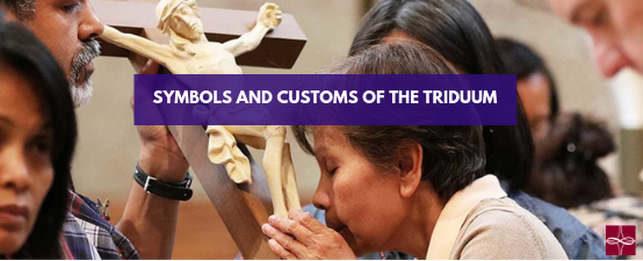

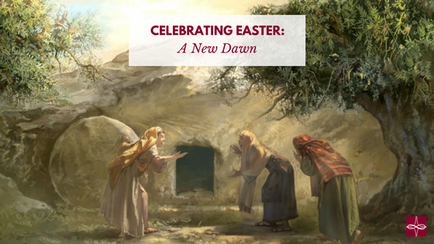

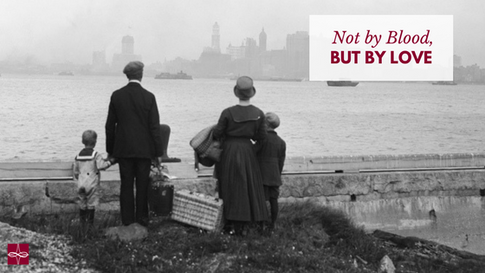

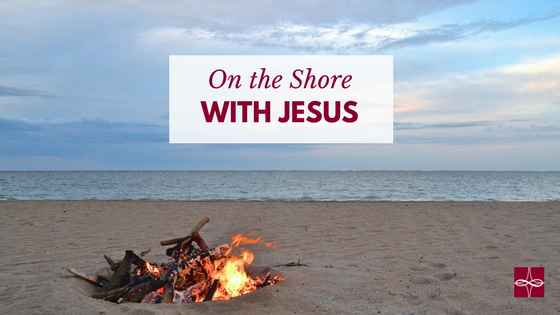

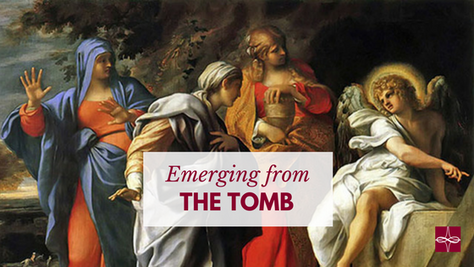

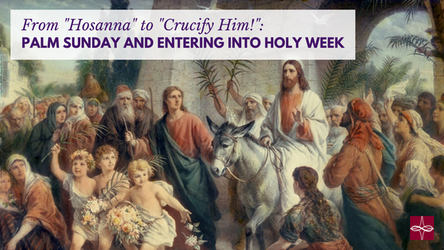

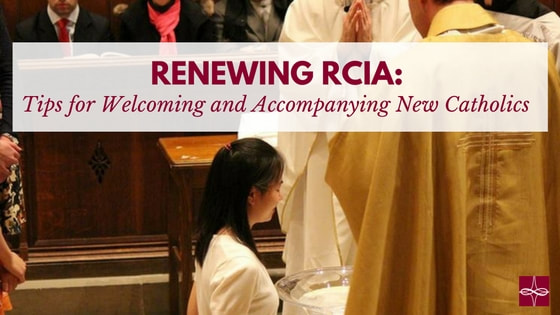

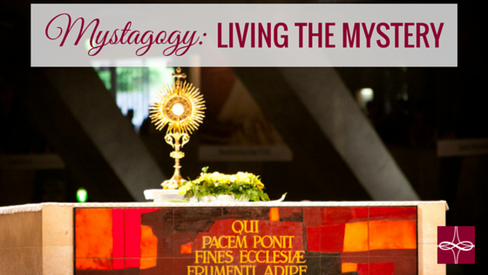

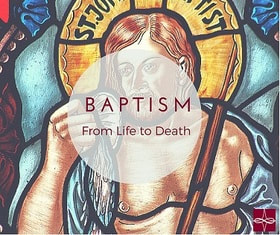

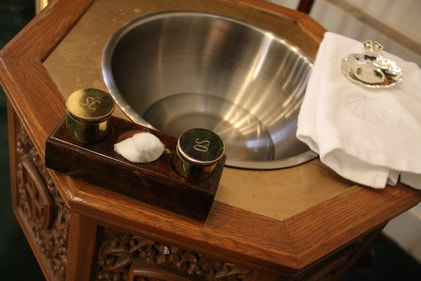
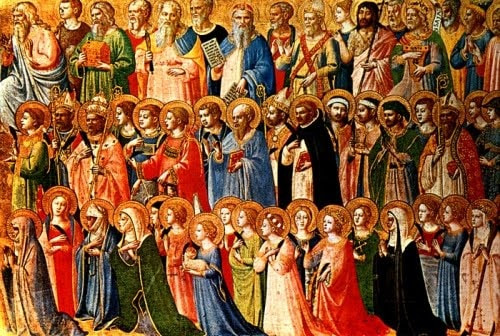
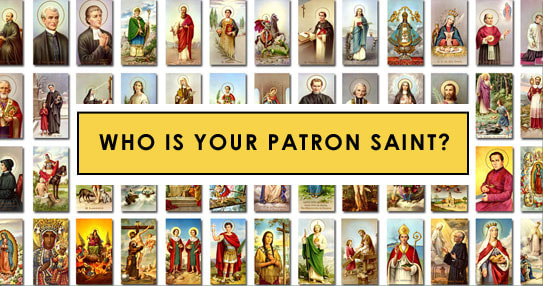
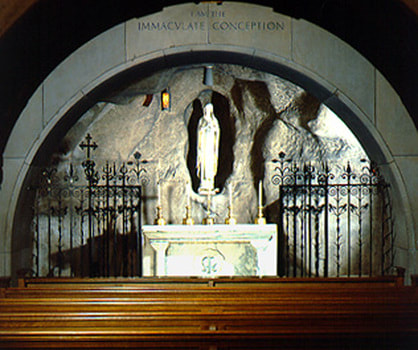
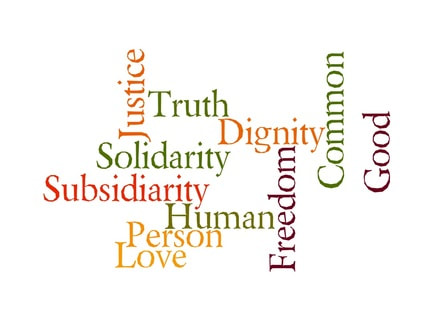

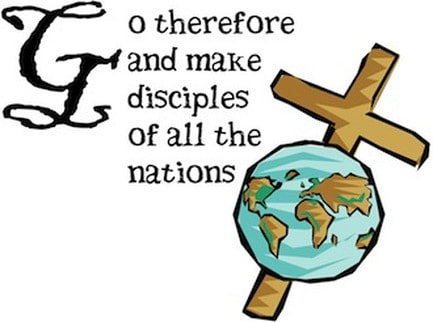
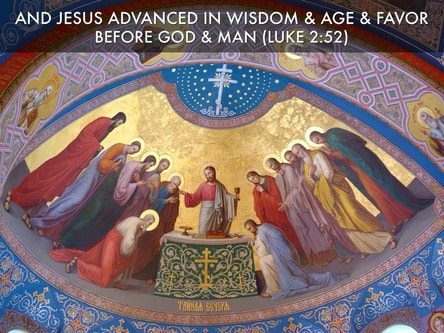
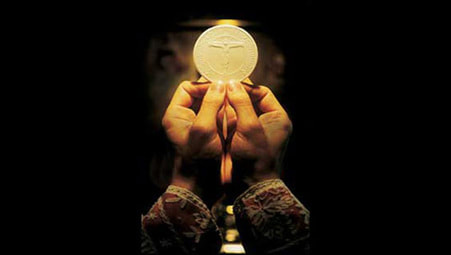
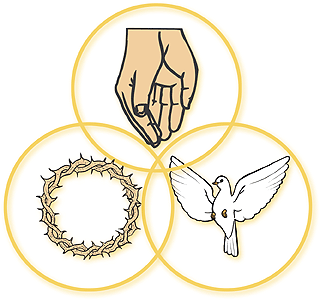
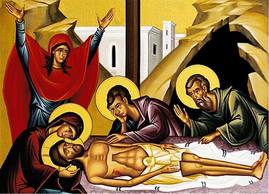
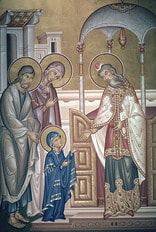
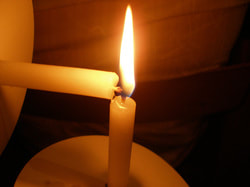
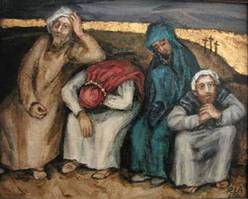
 RSS Feed
RSS Feed